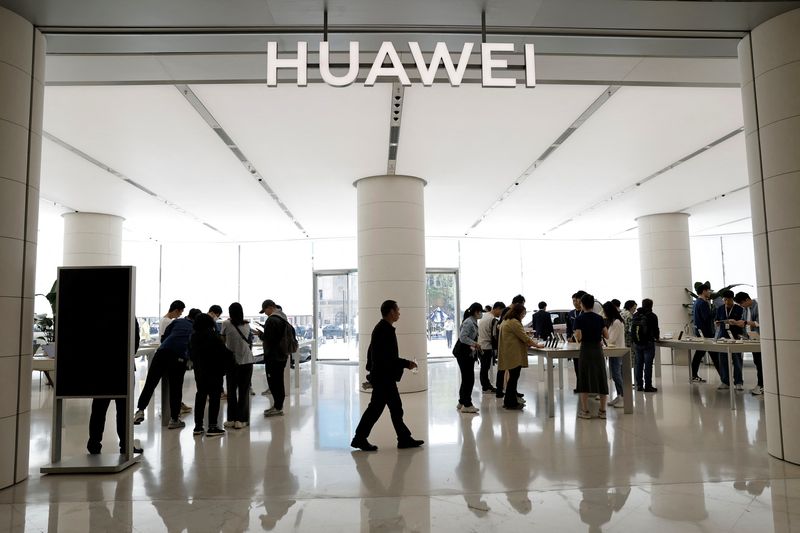Huawei’s new high-end Pura 70 series of smartphones sold out quickly after its launch last month. Analysts see it as another competitor to the Apple iPhone, and adds to evidence of how the Chinese company is resisting US restrictions.
Developed by the Shenzhen company, the Pura series features advanced cameras and is known for its slim design. In comparison, the Mate 60 series, which saw Huawei return to the high-end smartphone market last year, emphasizes performance and business features.
US companies iFixit and TechSearch International, which report on product teardowns, examined the inside of Huawei Technologies’ Pura 70 Pro for Reuters. These are the results:
Chip processor
The Pura 70 phones use an advanced externally-marked system on chip similar to that of the older Kirin 9000s, the chip used by Chinese chipmaker International Semiconductor Manufacturing Corp’s (SMIC) 7nm+2 production process.
IFixit, TechSearch, and other teardown companies call this chip the Kirin 9010.
Memory chips
Just like the Mate 60, the Pura 70 uses a DRAM chip from South Korean company SK Hynix.
However, the Pura 70’s NAND memory chip has markings indicating it was likely made by Huawei’s own chip unit, HiSilicon, according to iFixit and TechSearch. For comparison, the Mate 60 used SK Hynix’s NAND chips.
The Pura 70’s NAND chip has a storage capacity of 1 terabyte (TB) – equivalent to the storage in many high-end laptops – but it is made up of only 8 NAND chips, meaning each chip has 1 terabyte (Tbit) of storage capacity. . This is similar to the products of major foreign flash memory manufacturers such as SK Hynix, Kioxia, and Micron.
iFixit added that they believe HiSilicon may also have produced the memory controller for the NAND chip.
The density achieved depends on the chips used in the chip. However, they added that the companies could not definitively identify the chip’s manufacturer because the markings on the NAND die are unknown, although they believe it is a domestic product.
Other components made in China
The Pura 70 Pro includes a host of other important components designed by HiSilicon, such as WiFi and Bluetooth modules and power management chips.
Components such as speakers and LED flash drivers come from other local suppliers such as Goodix and Awinic.
Foreign-made spare parts
However, the phone still contains some components from foreign suppliers. The battery charger comes from the Taiwanese company Richtek, and especially the motion and rotation sensor comes from the German company Bosch.
IFixit noted that it is strange that Chinese manufacturers likely have the ability to produce these sensors locally, which raises the question of why it is necessary to use foreign-made devices. (Reporting by Brenda Goh and David Kirton; Editing by Jacqueline Wong)

“Thinker. Coffeeaholic. Award-winning gamer. Web trailblazer. Pop culture scholar. Beer guru. Food specialist.”







More Stories
Comet Tsuchinshan-Atlas is ready to shine this fall
Sonos isn’t bringing back its old app after all
Indiana Jones and the Great Circle is coming to PS5 in spring 2025